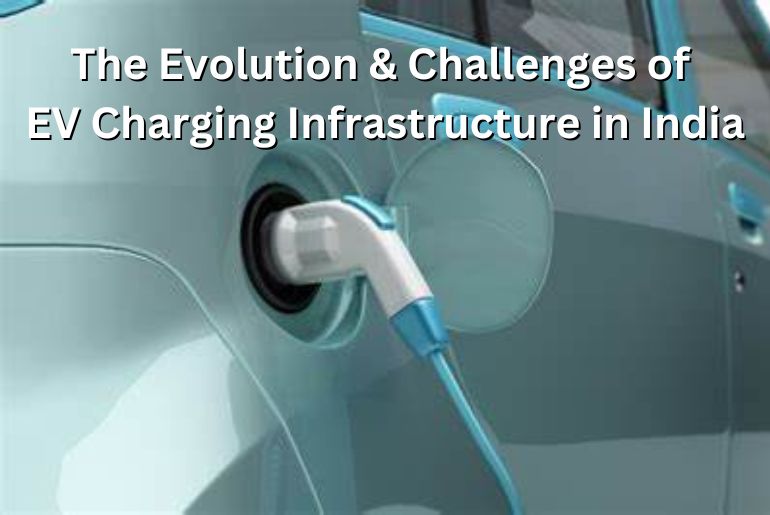The global shift towards sustainable transportation has significantly propelled the demand for electric vehicles (EVs). As a critical component of this transition, EV charging infrastructure plays a pivotal role in ensuring the viability and growth of the EV market. In India, the journey of establishing a robust EV charging network is marked by ambitious targets, innovative strategies, and substantial challenges.
The Current Landscape in EV Charging Infrastructure in India
India’s electric vehicle market has witnessed a surge in interest, driven by both environmental concerns and governmental incentives. The country’s EV ecosystem is still in its nascent stage but rapidly evolving. According to the Society of Manufacturers of Electric Vehicles (SMEV), the adoption of electric two-wheelers and three-wheelers has been particularly robust, accounting for a significant share of the EV market. However, the success of these vehicles hinges on the availability and accessibility of charging infrastructure.
As of 2023, India has over 1,700 public charging stations, a number that is growing steadily but is still far from adequate. The government aims to increase this figure exponentially to meet its target of 30% electric vehicle penetration by 2030. The challenge lies not just in the number but in the strategic placement, reliability, and efficiency of these charging stations.
Government Initiatives and Policies in EV Charging Infrastructure in India
The Indian government has been proactive in promoting the development of EV charging infrastructure. The Faster Adoption and Manufacturing of Hybrid and Electric Vehicles (FAME) scheme, launched in 2015 and now in its second phase (FAME II), provides incentives for the installation of charging stations across the country. Under FAME II, the government has allocated a significant portion of its budget to support public charging infrastructure, aiming to establish 2,700 charging stations by 2025.
In addition to FAME, the National Electric Mobility Mission Plan (NEMMP) 2020 outlines a roadmap for achieving national fuel security by promoting hybrid and electric vehicles. This plan emphasizes the importance of a widespread and efficient charging network.
Private Sector Participation
Recognizing the vast potential and need for robust EV infrastructure, numerous private players have entered the market. Companies like Tata Power, Reliance Industries, and Ather Energy are investing heavily in setting up charging stations across urban and rural areas. Start-ups like Magenta Power and ChargeGrid are also contributing by offering innovative solutions like solar-powered charging stations and portable chargers.
Collaborations between automotive manufacturers and charging service providers are becoming increasingly common. For instance, Tata Motors has partnered with Tata Power to install 300 fast-charging stations in cities like Mumbai, Delhi, and Bengaluru. Similarly, Hyundai and Kia have committed to installing multiple high-speed charging points at dealerships across the country.
Technological Innovations in EV Charging Infrastructure in India
Advancements in technology are critical to overcoming the barriers to EV adoption. Fast-charging technology, which can significantly reduce the time required to charge an EV, is being rapidly developed and deployed. The advent of ultra-fast chargers that can recharge an EV in 15-30 minutes is a game-changer, particularly for commercial fleets and long-distance travel.
Smart grid technology and energy management systems are also essential in integrating renewable energy sources with the charging infrastructure. By leveraging solar and wind energy, India can ensure that its EV revolution is both sustainable and environmentally friendly.
Challenges and the Road Ahead in EV Charging Infrastructure in India
Despite the progress, several challenges impede the development of a comprehensive EV charging network in India. The high initial cost of setting up charging stations, coupled with the lack of a standardized charging protocol, poses significant hurdles. Additionally, the power grid’s capacity and reliability in rural areas are concerns that need addressing.
The government and private sector must work collaboratively to develop innovative financing models and business strategies. Public-private partnerships can play a crucial role in scaling up infrastructure while ensuring financial viability.
Moreover, consumer awareness and education about the benefits and usage of EVs and charging stations are vital. Efforts to inform and incentivize consumers can accelerate the adoption of EVs, creating a demand-driven expansion of charging infrastructure.
Conclusion
The future of electric vehicles in India is promising, with the potential to revolutionize the transportation sector and significantly reduce carbon emissions. A robust and widespread EV charging infrastructure is the cornerstone of this transformation.
With continued governmental support, private sector innovation, and technological advancements, India is poised to build a sustainable and efficient EV ecosystem. However, addressing the existing challenges through collaborative efforts will be crucial to achieving the ambitious goals set for 2030 and beyond.

